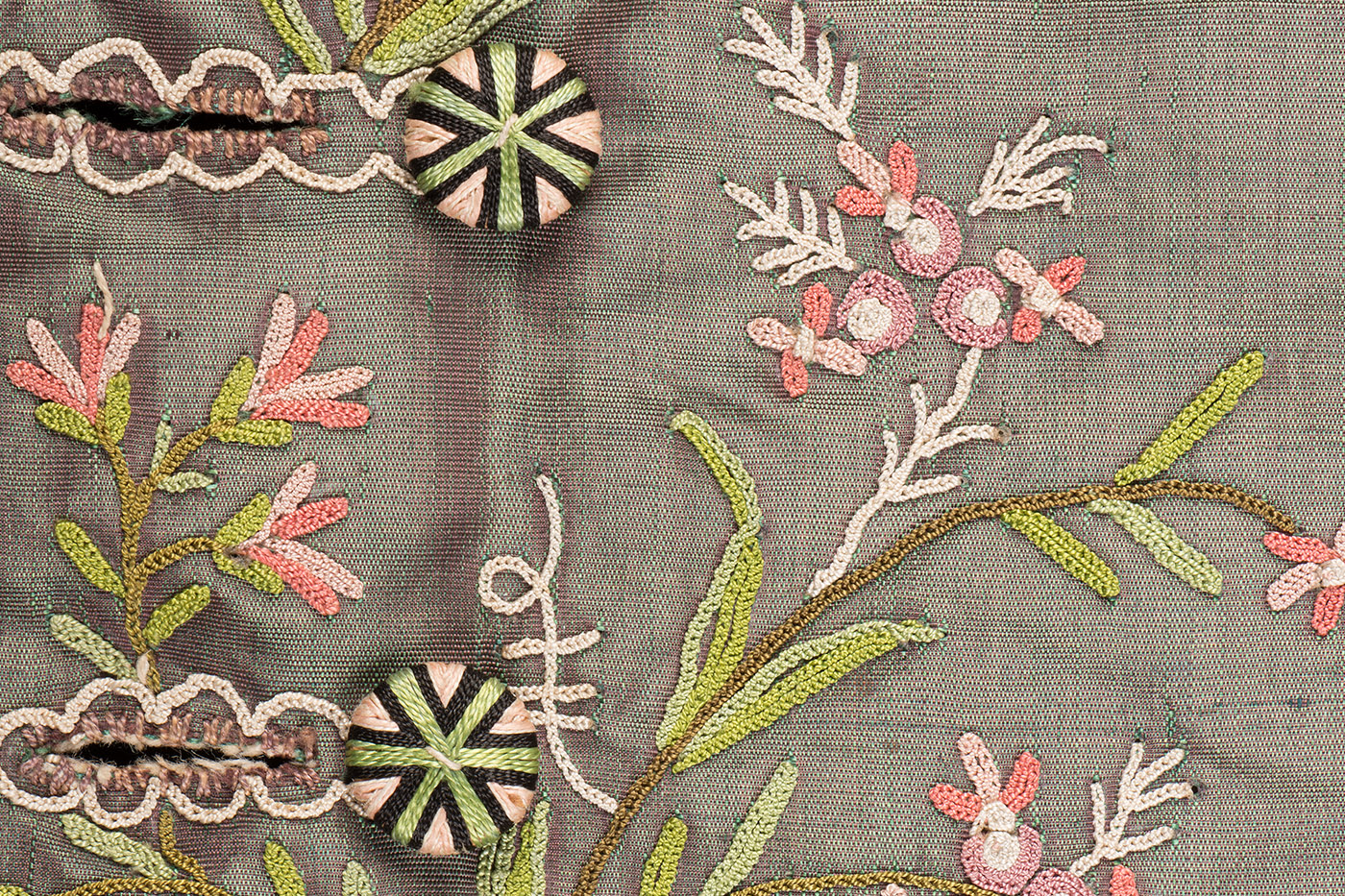Buttons of silk or mohair threads decoratively wrapped over wooden, bone or horn “molds” commonly adorned men’s garments throughout the 18th century.
Patterns with names like “death-head” and “basket” could be had in single hues, multicolored, and gold and silver threads. Available from London merchants, but also made by local tailors, a few dozen buttons were needed for each suit.
As these styles of buttons fell from use, so did the skills in making them. Mark Hutter, Colonial Williamsburg’s first master tailor, has reconstructed the technique by examining decaying originals. He shares his technique here. The next time you are in the Historic Area, stop by the tailor at the Durfey Shop and look at the variety of buttons.

Supplies:
Wrapping thread (silk buttonhole twist or pearl embroidery cotton)
linen thread
Needle, Scissors
Wooden button molds
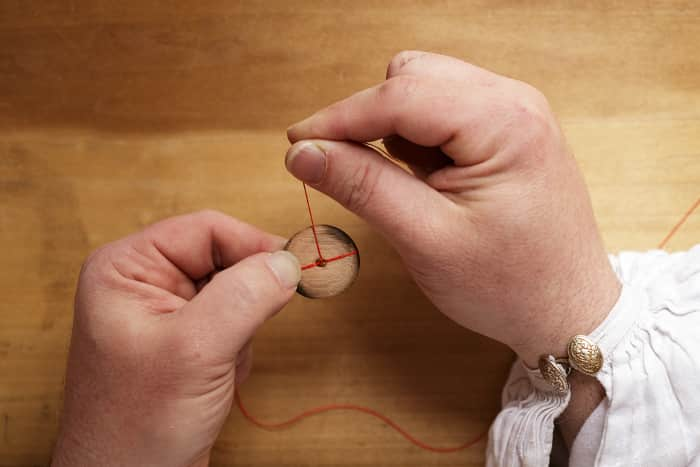
Step 1
Thread the needle with the wrapping thread, keeping the thread attached to the spool. Bring the needle up through the center hole of the button mold. Create a Figure 8 from “a” to “b”, passing through the center hole two to three times, then do the same from “c” to “d.”
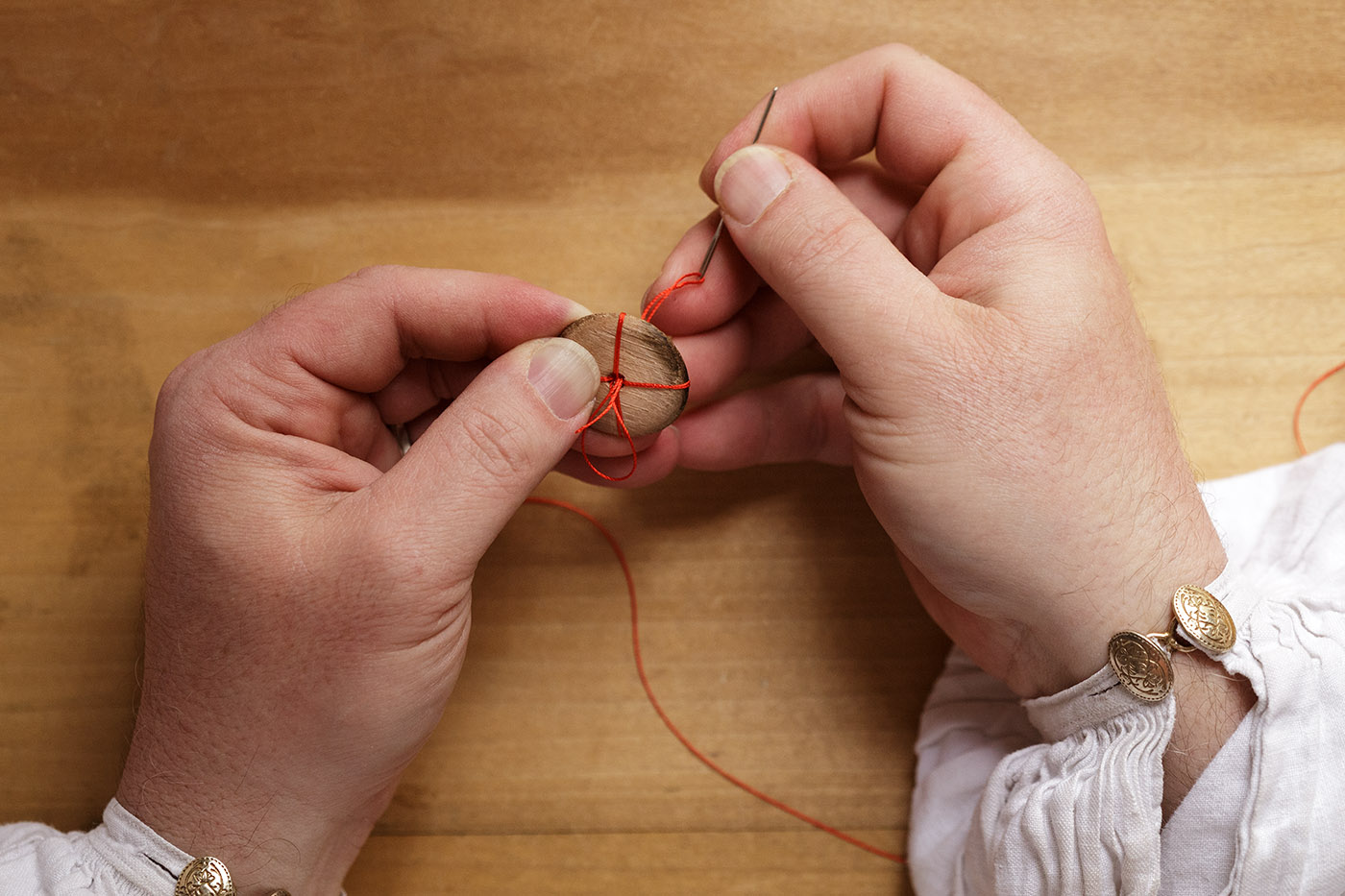
Step 2
Bind the center of the cross with three to four stitches. Tie off a square knot in the back, trim the tail and leave the wrapping thread attached to the spool. (Tip: The cross should be even. Fold a piece of paper into quarters. Open the paper. Match the cross of the thread to the cross in the paper folds.)

Step 3
Bring the wrapping thread from behind the button to the edge at the lower right. Wrap once from lower right (LR) to upper right (UR) over the surface. Wrap from upper right to lower left on the underside. Quarter-turn, moving the lower left (LL) to the lower right (LR). Repeat until button is half covered.
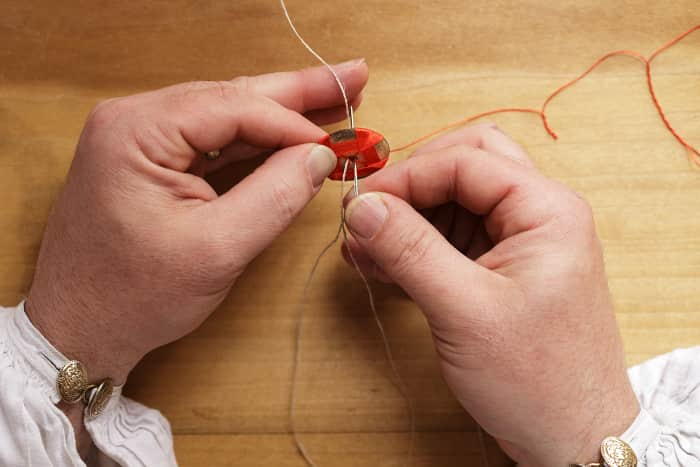
Step 4
Temporarily secure the wrapping thread with a pin and set the button aside. Thread the needle with 18 inches of linen thread. Stitch up and down through the center hole twice, leaving a short tail and a long tail.

Step 5
Hold the linen tails firmly by wrapping them around the hand holding the button. Continue Step 3 with the wrapping thread, which will wind about the tails of the linen thread, until the button is covered.
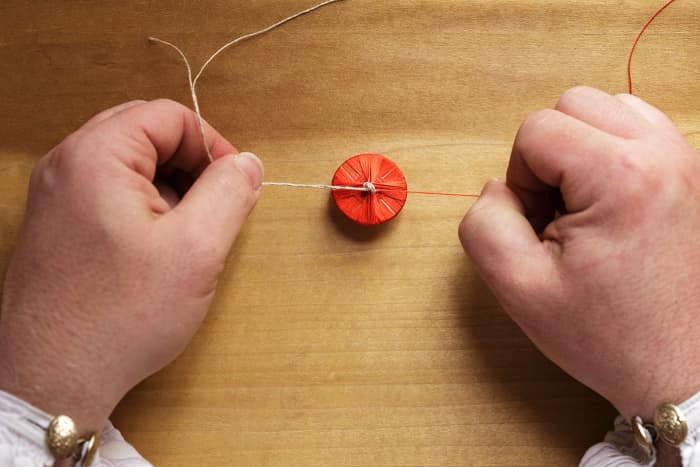
Step 6
Wrap the wrapping thread around the linen tails two to three times. Cut the wrapping thread from the spool, leaving a 12-inch tail. Tie the wrapping thread and tails in a square knot. Then thread the needle with the wrapping thread. (Tip: If the wrapping is uneven, fill gaps by turning the button halfway around instead of quarter-turn.)

Step 7
Work the needle and wrapping thread up through the center hole of the button mold and back down again, making a stitch over the last two or three wraps on the face of the button. Repeat to make an “x” on the surface. Anchor the wrapping thread with a stitch on the back, bury the tail, then cut it off.
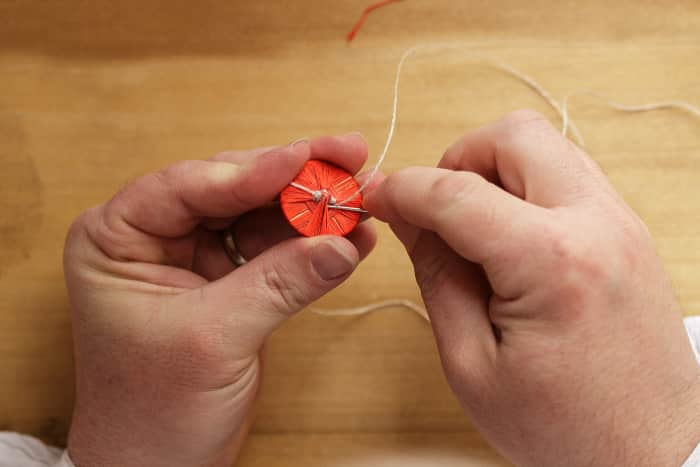
Step 8
Put the needle on the longer linen tail, bind each spoke in a few stitches. Bury the tails, then cut them off.
